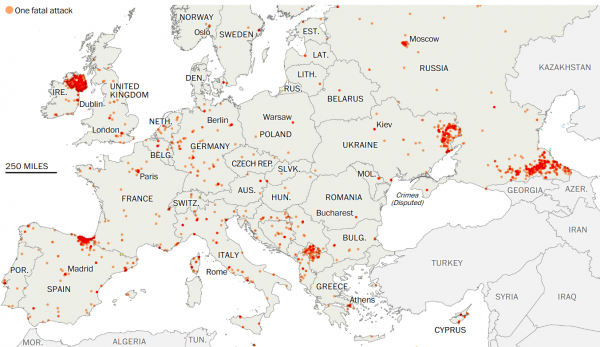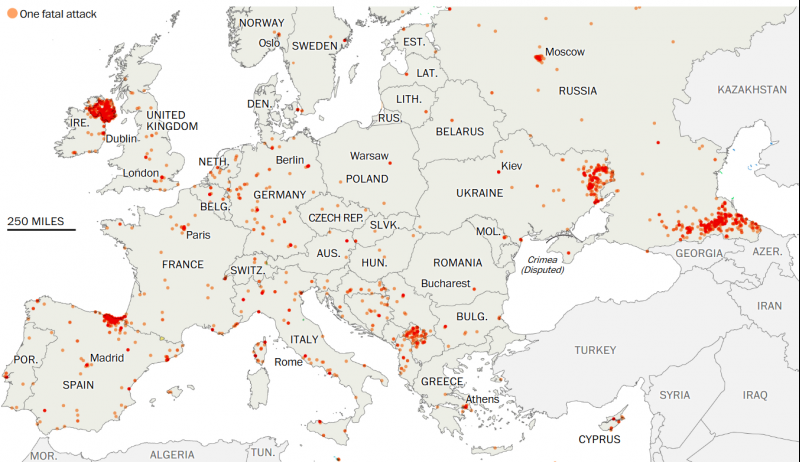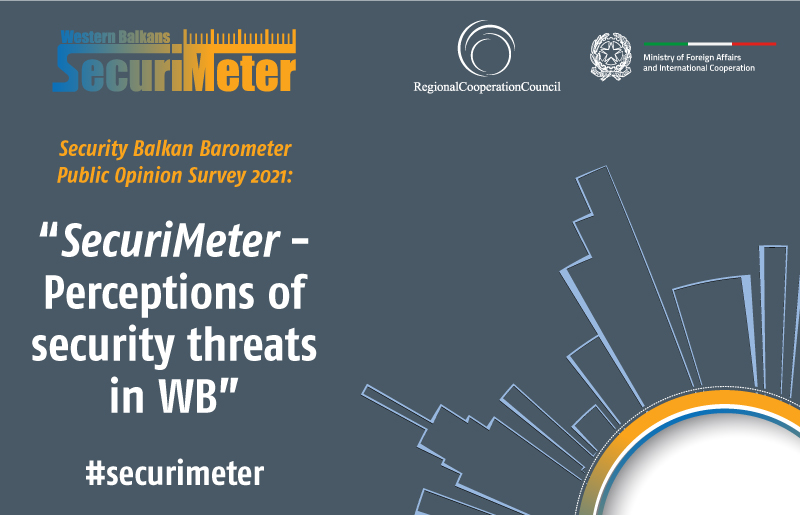- Home/
- News
46 years of terrorist attacks in Europe, visualized
The attacks can happen anywhere: In a holiday market outside a historic church in Berlin, on the street during a national holiday in France, in an airplane over Scotland or during the first day of school in a small town in Russia.
Sometimes, a plot fails – a detonator malfunctions or authorities make an arrest – and no one is injured.
Other times, an attack leaves a trail of death and destruction that can shake a nation, even a continent. But these incidents are nothing new.

Terrorism in Europe has killed 11,288 people in 18,811 attacks since January 1970, according to the University of Maryland National Consortium for the Study of Terrorism and Responses to Terrorism’s Global Terrorism Database, which tracks more than 170,000 foreign and domestic incidents worldwide.
In 2016, the number of deadly attacks across the continent continued to decrease. Despite fewer attacks, they were still deadly, killing more than 300 people in total.
Attacks in 2004 killed the most people, according to the university, with more than 800 deaths that year.

The frequency and deadliness of terrorist attacks have shifted from western to eastern Europe.
From the 1970s to the early ‘90s, attacks from separatist and extremist groups rippled in western countries, such as Northern Ireland and Spain.
By the mid ‘90s, the number of deadly attacks in the region fell. That wasn’t the case in the eastern region.
In the years after the fall of the Soviet Union, terrorist groups formed in the ensuing conflicts throughout the former Soviet republics, with some receiving support from foreign extremist groups, including al-Qaeda.
In recent years, the conflict in eastern Ukraine have led to a spike in terrorist attacks in eastern Europe.
Bombings have been the most common method used in fatal terrorist attacks since the 1970s.
Among the confirmed explosive devices in these attacks, terrorists used vehicles in nearly 200 deadly attacks since the ‘70s.
Russia, the United Kingdom, Ukraine, Spain and France are among the countries with the highest number of deaths from terrorism, according to the database.
More people died in terrorist attacks in Russia than any other country in Europe.
The country experienced one of Europe's deadliest attacks in September 2004 when members of the Riyadus-Salikhin Reconnaissance and Sabotage Battalion of Chechen Martyrs, an Islamist force of suicide attackers, took more than 1,000 people hostage during the first day of classes at a school in Beslan, North Ossetia, in the North Caucasus region.
More than 300 people died at the end of the three-day siege. About half of the victims were children, according to reports.
Much of the terrorism-related deaths in the United Kingdom during the late 20th century came from attacks orchestrated by pro-Irish and pro-English extremist groups, notably the Irish Republican Army and Ulster Volunteer Force, in Northern Ireland.
These attacks occurred during The Troubles, a 30-year ethno-nationalist conflict between loyalists, a majority of which were Protestant who wished to remain part of the United Kingdom, and republicans, who were exclusively Catholic and fought to become part of Ireland.
While the IRA was the deadliest group to be active in the United Kingdom – responsible for more than 1,700 deaths – they were not responsible the country’s most devastating terrorist attack: the 1988 Lockerbie bombing.
On Dec. 21, 1988, a bomb exploded inside Pan Am Flight 103 as the plane flew over Lockerbie, Scotland. The explosion killed 270 people. Abdel Basset Ali al-Megrahi, a Libyan intelligence officer, was convicted in 2001 for the attack. In October, Scottish prosecutors said they wanted to interview two Libyans who they suspect worked with al-Megrahi.
Similar to the United Kingdom, terrorist attacks from the 1970s to the 2000s in Spain were from pro-national groups.
The most notable was the ETA, also known as Basque Fatherland and Freedom, a group that committed kidnappings, assassinations and bombings with a goal to make the Basque Country in Northern Spain independent. It disbanded in 2011.
In March 2004, a series of bombs on trains along the Cercanías railroad system in Madrid killed more than 190 people.
It was the country’s deadliest attack. Abu Hafs al-Masri Brigades, an Islamic group with ties to al-Qaeda, claimed responsibility.
Ukraine saw more than 180 terrorist attacks that resulted in at least one death since 1992.
However, a majority of the country’s deaths – more than 800 – occurred in 2014 and 2015 during the ongoing conflict in eastern Ukraine.
The attacks – those targeting civilians, businesses, the media and government officials without any wartime strategic value – have been attributed to the Donetsk and Luhansk people’s republics.
The deadliest attack occurred on July 17, 2014, when Malaysia Airlines Flight 17 was shot down in eastern Ukraine. Nearly 300 crew members and passengers died.
In September, a Dutch-led investigation said the missile that brought down the plane originated in Russia and was fired from territory held by pro-Russian separatists.
France’s deadliest year for terrorism-related deaths was 2015 with more than 140 deaths from two attacks in Paris.
In January 2015, three men who had ties with al-Qaeda in Yemen and the Islamic State shot and killed 12 people at the Charlie Hebdo offices in Paris.
Ten months later, the country saw its worst terrorist attack in history when members of the Islamic State coordinated a series of shootings and bombings across Paris that left about 130 people dead.
In July 2016, Mohamed Lahouaiej-Bouhel, a Tunisian national, drove a truck into a crowd on the Promenande des Anglais in Nice, killing more than 80 people and injuring hundreds more.
|
About this data The data for this analysis comes from the University of Maryland National Consortium for the Study of Terrorism and Responses to Terrorism’s Global Terrorism Database, which tracks terrorist attacks worldwide since 1970. The university defines an attack as “the threatened or actual use of illegal force and violence by a non‐state actor to attain a political, economic, religious, or social goal through fear, coercion, or intimidation.” Attacks calculated for this graphic were limited to those not classified by the university as wartime tactics. More information can be found here. Originally published: Dec. 19, 2016. |
Source: Link



 Development of specialized PCVE web site is funded by EU FUNDS CN 2017-386/831 - "IPA II 2016 Regional Action on P/CVE in the Western Balkans"
Development of specialized PCVE web site is funded by EU FUNDS CN 2017-386/831 - "IPA II 2016 Regional Action on P/CVE in the Western Balkans"